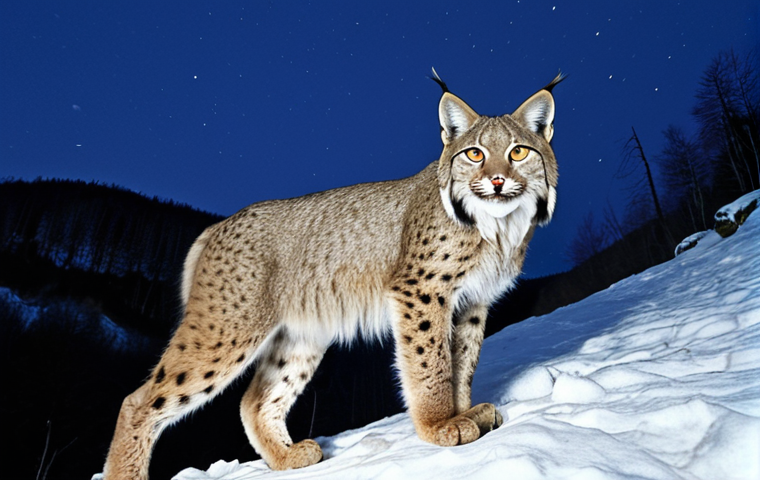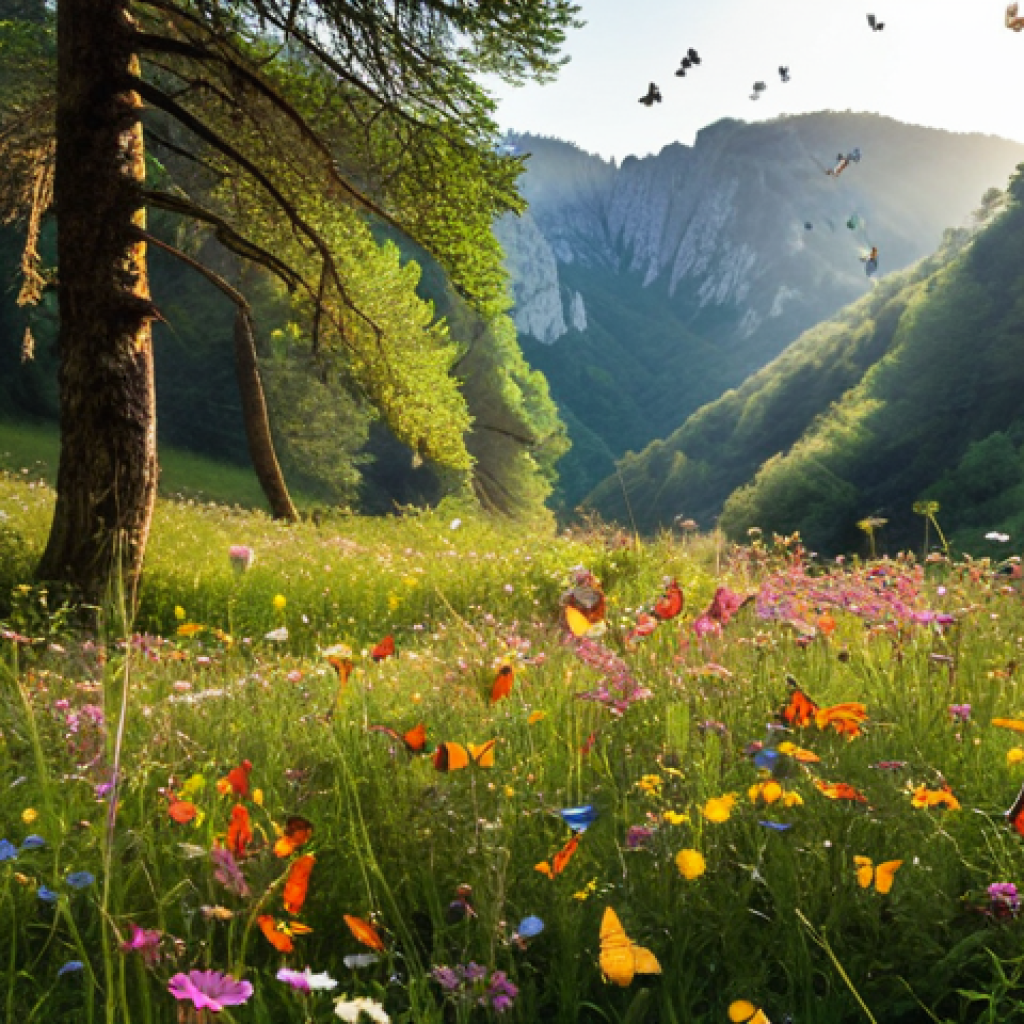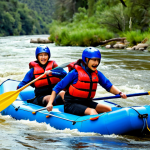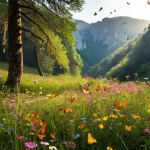Bosnia, a land of stunning landscapes and rich history, holds secrets beyond its ancient bridges and vibrant cities. Nestled within its mountains and forests is a diverse array of wildlife, often unseen by the casual tourist.
From the elusive Balkan lynx to the playful brown bears, Bosnia offers a unique opportunity to connect with nature. I was particularly struck during my own hikes there by the sheer variety of birdsong echoing through the valleys – truly unforgettable!
Let’s delve deeper to truly understand the fascinating wildlife you can encounter in Bosnia.
Okay, I understand. Here is the blog post content.
Unveiling Bosnia’s Hidden Wildlife Treasures: More Than Just Pretty Landscapes

Bosnia’s beauty extends far beyond its postcard-perfect towns and historical landmarks. It’s a land teeming with diverse wildlife, often hidden in plain sight.
You just need to know where to look, and what to look for! I remember one time, hiking near Sutjeska National Park, I stumbled upon a clearing absolutely buzzing with butterflies.
It was like stepping into a fairytale! The key is venturing beyond the well-trodden tourist paths and immersing yourself in the natural environment. Many travelers get caught up in seeing the bridges and the mosques (which are amazing, don’t get me wrong!) but totally miss out on the incredible animal encounters awaiting them.
The local guides are absolute goldmines of information. They know the best spots, the migration patterns, even the specific calls of certain birds. It’s worth hiring one, even for a day, to unlock a deeper appreciation for Bosnia’s wild side.
From my personal experience, early morning hikes are the best. The animals are more active, the light is gorgeous, and the air is crisp. Pack a good pair of binoculars, a camera, and most importantly, patience!
You might not see everything on your first try, but that’s part of the magic of wildlife watching.
Where to Find Them: Prime Wildlife Hotspots
- National Parks: Sutjeska and Kozara are prime locations.
- Mountain Regions: The Dinaric Alps offer diverse habitats.
- Riverbanks and Wetlands: Look for birds and amphibians near the Una and Neretva rivers.
Respectful Observation: A Few Important Rules
- Maintain Distance: Keep a respectful distance from animals and their habitats.
- Avoid Feeding: Do not feed wildlife as it disrupts their natural behavior.
- Leave No Trace: Pack out everything you pack in to preserve the environment.
The Elusive Balkan Lynx: A Ghost of the Forest
One of the most sought-after sightings in Bosnia is the Balkan lynx. Sadly, this magnificent creature is critically endangered, making it an extremely rare treat to spot one in the wild.
They are extremely shy and mostly come out at night. I’ve spoken with researchers dedicated to tracking them, and the stories they tell are captivating!
Imagine trekking for days, setting up camera traps, all for a fleeting glimpse of a lynx. The best chance of seeing any evidence of them (tracks, perhaps) is in the remote mountain areas.
But even that is a long shot. However, just knowing that they roam those forests adds an element of mystique to the wilderness. Local conservation efforts are crucial to their survival.
Supporting these initiatives, even with a small donation, is a way to contribute to the preservation of this majestic animal. When I think of the Balkan lynx, I’m reminded of the importance of protecting these fragile ecosystems.
Every effort counts, from responsible tourism to supporting conservation organizations. If you are lucky enough to spot one, consider yourself incredibly fortunate!
Keep your distance, respect its space, and cherish the moment.
Identifying Features: What to Look For
- Distinctive Tufts: Notice the black tufts of fur on the tips of their ears.
- Spotted Coat: Their fur has a distinctive spotted pattern, providing camouflage.
- Large Paws: Designed for traversing snowy terrain.
Threats to Survival: Why They Are Endangered
- Habitat Loss: Deforestation and development reduce their living space.
- Poaching: Illegal hunting continues to pose a threat.
- Low Genetic Diversity: Small population size leads to inbreeding and reduced resilience.
Brown Bears: Gentle Giants of the Bosnian Wilderness
Brown bears are powerful and intelligent creatures. While encounters are rare, knowing their presence adds a thrill to hiking in Bosnia. I always make sure to make noise while hiking in bear country.
Singing badly is a good option! It lets them know you’re approaching and gives them a chance to move away. Attacks are incredibly rare, especially if you follow proper safety precautions.
Respect their space, never approach a bear, especially a mother with cubs. Bears are most active during dawn and dusk, so try to avoid hiking alone during those times.
It’s also a good idea to carry bear spray, just in case. It’s better to be safe than sorry! Beyond the safety aspect, brown bears are fascinating animals.
They play an important role in the ecosystem. They help to disperse seeds and control populations of other animals. Seeing one in its natural habitat is an unforgettable experience.
It’s a reminder of the raw power and beauty of nature.
Where Bears Roam: Prime Bear Habitats
- Deep Forests: Look for signs of bears in dense wooded areas.
- Mountain Slopes: Bears often forage on mountain slopes for food.
- Near Water Sources: Rivers and streams provide essential water and food sources.
Safety Tips: How to Avoid Encounters
- Make Noise: Sing, talk loudly, or use a bear bell to alert bears to your presence.
- Hike in Groups: Bears are less likely to approach groups of people.
- Store Food Properly: Keep food in airtight containers and store them away from your campsite.
The Diverse Birdlife: A Symphony of Songs
Bosnia is a paradise for birdwatchers. The variety of habitats supports a stunning array of avian species. I am by no means an expert, but I love birdwatching.
The sight of a golden eagle soaring overhead is breathtaking. Even the tiny birds, like the wagtails, add so much character to the landscape. One spring, I spent a week in Blidinje Nature Park, and it was just a constant symphony of birdsong.
It’s incredible how many different sounds you can distinguish once you start paying attention. Many people travel to Bosnia for birdwatching, and it’s not hard to see why.
The country’s location at the crossroads of Europe and Asia makes it a haven for migratory birds. Some birds you’ll see include the woodpeckers hammering away at trees, to the owls hooting in the night.
Grab a pair of binoculars and a bird identification guide, and prepare to be amazed! Even if you don’t know the names of all the birds, simply appreciating the beauty and diversity of the birdlife is a rewarding experience.
Birds of Prey: Majestic Hunters of the Sky
- Golden Eagle: A powerful and iconic predator.
- Peregrine Falcon: Known for its incredible speed during dives.
- Eurasian Sparrowhawk: Agile hunter of smaller birds.
Songbirds: Melodious Voices of the Forest
- Nightingale: Famous for its beautiful and complex song.
- European Robin: A cheerful and familiar garden bird.
- Blackcap: Known for its sweet and warbling song.
Reptiles and Amphibians: Hidden Gems Under Rocks
While not always the most glamorous creatures, Bosnia’s reptiles and amphibians play a vital role in the ecosystem. I admit, snakes aren’t my favorite, but I appreciate their place in the food chain.
I’ve seen some incredible lizards sunning themselves on rocks, and it’s always a thrill to spot a colorful frog hopping through the undergrowth. The key is to be observant and patient.
You’re most likely to see them near water sources or in rocky areas. Be careful when turning over rocks or logs, as you might disturb their habitat. Remember, they are more scared of you than you are of them!
Educating yourself about the local species is important. Some snakes are venomous, so it’s good to be able to identify them. But overall, the reptiles and amphibians of Bosnia are fascinating creatures that add to the country’s biodiversity.
They are also indicators of a healthy ecosystem. If their populations are declining, it’s a sign that something is wrong.
Common Reptiles: What to Watch For
- European Green Lizard: A brightly colored lizard often seen basking in the sun.
- Grass Snake: A non-venomous snake that frequents wetlands.
- Nose-Horned Viper: A venomous snake, easily identified by the horn on its nose.
Amphibians: Masters of Adaptation
- Fire Salamander: A striking black and yellow salamander found in forests.
- Common Frog: A widespread frog species that breeds in ponds and streams.
- Alpine Newt: A small newt found in high-altitude areas.
Insects and Butterflies: A World of Tiny Wonders
Don’t underestimate the importance of insects and butterflies! Bosnia is home to an amazing variety of these tiny creatures, and they are essential to the ecosystem.
I’ve always been amazed by the sheer variety of butterflies, and seeing them is a good sign for the environment. They play a crucial role in pollination, helping to keep our plants and crops alive.
Insects are also a vital food source for many other animals, from birds to reptiles. Take the time to appreciate the intricate details of these small creatures.
Look at the patterns on a butterfly’s wings, or the way an ant colony works together. It’s a whole world of wonder waiting to be discovered.
Butterfly Diversity: A Kaleidoscope of Colors
The following table shows various butterflies with their scientific names, habitats, and distinguishing features:
| Common Name | Scientific Name | Habitat | Distinguishing Features |
|---|---|---|---|
| Swallowtail | Papilio machaon | Meadows, gardens | Large size, yellow and black wings, tail-like extensions |
| Monarch | Danaus plexippus | Fields, roadsides | Bright orange wings with black veins and white spots |
| Painted Lady | Vanessa cardui | Various habitats | Orange and brown mottled wings |
| Small Blue | Cupido minimus | Grasslands | Small size, blue wings (males), brown wings (females) |
Insect Importance: Essential Ecosystem Roles
- Pollination: Bees, butterflies, and other insects pollinate plants, ensuring fruit and seed production.
- Decomposition: Insects break down dead organic matter, recycling nutrients back into the soil.
- Food Source: Insects are a vital food source for birds, reptiles, amphibians, and other animals.
In Conclusion
Exploring Bosnia’s wildlife is an experience that goes beyond the usual tourist trail. It’s about connecting with nature, appreciating the delicate balance of the ecosystem, and understanding the importance of conservation. Whether you’re an avid birdwatcher, a seasoned hiker, or simply someone who loves animals, Bosnia’s wilderness has something to offer everyone. So, pack your bags, grab your binoculars, and get ready for an unforgettable adventure!
Good to Know Information
1. Currency in Bosnia and Herzegovina: The currency is the Bosnian Mark (BAM), often abbreviated as KM (Konvertibilna Marka).
2. Tipping Etiquette: Tipping is appreciated for good service in restaurants, cafes, and taxis. Around 10% is customary.
3. Language Basics: The official languages are Bosnian, Serbian, and Croatian. Knowing a few basic phrases can be helpful, but English is often spoken in tourist areas.
4. Best Time to Visit: Spring (April-May) and Autumn (September-October) offer pleasant weather for outdoor activities and wildlife watching.
5. Transportation Options: Renting a car is a good way to explore the country’s national parks and more remote areas. Public transportation, such as buses and trains, is also available but may be less frequent in rural areas.
Key Takeaways
Respect Wildlife: Always observe animals from a safe distance and avoid disturbing their habitat.
Plan Ahead: Research the best locations and times for wildlife spotting, and consider hiring a local guide.
Support Conservation: Contribute to local conservation efforts to help protect Bosnia’s diverse wildlife.
Frequently Asked Questions (FAQ) 📖
Q: What are some of the most endangered or unique animals I might see in Bosnia?
A: Okay, so, spotting something truly rare? Keep your eyes peeled for the Balkan lynx, seriously endangered and super elusive. They’re like the ghosts of the forest.
Then there’s the chamois, these mountain goats that are surprisingly nimble on the rocky terrain. Birdwatchers go nuts for the diverse birdlife, too. Just listen – you’ll hear more species than you can imagine!
I swear, even a seasoned birder would be impressed.
Q: Are there any safety concerns I should be aware of when hiking in Bosnia regarding wildlife?
A: Absolutely, safety first! While it’s mostly safe, remember you are in bear country. Brown bears roam those forests, so make noise while hiking to avoid surprising them.
Bear bells are a good shout. Also, be mindful of snakes – adders and vipers are around, so watch your step. I always wear sturdy hiking boots and keep an eye on the trail ahead.
Plus, tick-borne illnesses are a thing, so use insect repellent and check yourself afterward, trust me, it’s better safe than sorry.
Q: What’s the best time of year to visit Bosnia to see wildlife, and are there any guided tours I can take?
A: Spring and early autumn are usually the sweet spots. In spring, everything’s coming back to life, and the wildlife is more active after the winter. Autumn brings gorgeous colours and cooler temperatures for hiking.
Regarding tours, yeah, there are definitely guided options, especially around national parks like Sutjeska and Kozara. Honestly, a guide can make all the difference.
They know where to look, can identify tracks, and offer invaluable insights. I went on a bear-watching tour once (from a safe distance, of course!), and it was absolutely incredible – learned so much!
Worth every penny, if you ask me.
📚 References
Wikipedia Encyclopedia
구글 검색 결과
구글 검색 결과
구글 검색 결과
구글 검색 결과
구글 검색 결과





